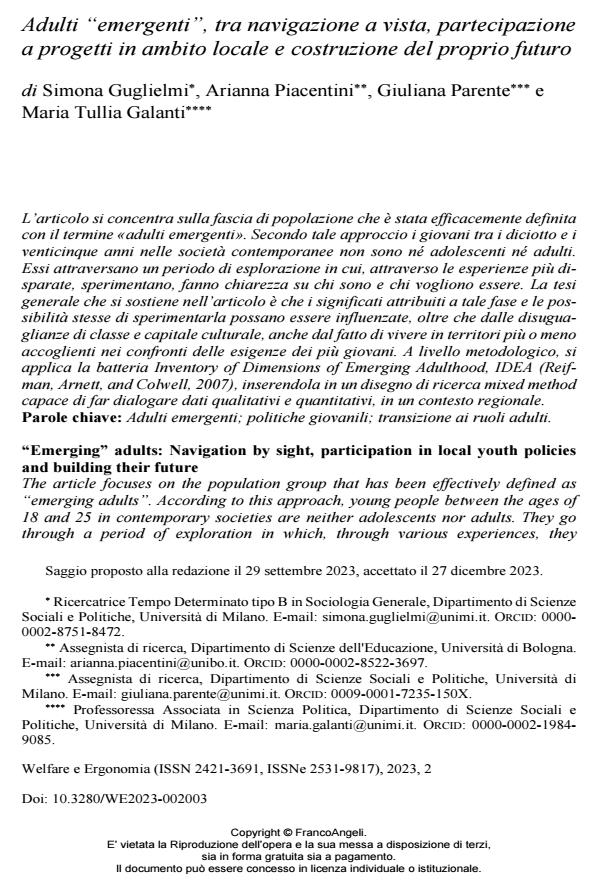“Emerging” adults: Navigation by sight, participation in local youth policies and building their future
Journal title WELFARE E ERGONOMIA
Author/s Simona Guglielmi, Arianna Piacentini, Giuliana Parente, Maria Tullia Galanti
Publishing Year 2024 Issue 2023/2
Language Italian Pages 14 P. 29-42 File size 364 KB
DOI 10.3280/WE2023-002003
DOI is like a bar code for intellectual property: to have more infomation
click here
Below, you can see the article first page
If you want to buy this article in PDF format, you can do it, following the instructions to buy download credits

FrancoAngeli is member of Publishers International Linking Association, Inc (PILA), a not-for-profit association which run the CrossRef service enabling links to and from online scholarly content.
The article focuses on the population group that has been effectively defined as “emerging adults”. According to this approach, young people between the ages of 18 and 25 in contemporary societies are neither adolescents nor adults. They go through a period of exploration in which, through various experiences, they experiment, gain clarity about who they are, and who they want to be. The general thesis argued in the article is that the meanings attributed to this phase and the opportunities to experience it can be influenced not only by class and cultural capital inequalities but also by living in more or less “youth friendly” territories. Methodologically, the article applies the IDEA battery - Inventory of Dimensions of Emerging Adulthood (Reifman, Arnett and Colwell, 2007), incorporating it into a mixed-method research design integrating qualitative and quantitative data in a regional context.
Keywords: Emerging adulthood; youth policies; transition to adulthood.
Simona Guglielmi, Arianna Piacentini, Giuliana Parente, Maria Tullia Galanti, Adulti “emergenti”, tra navigazione a vista, partecipazione a progetti in ambito locale e costruzione del proprio futuro in "WELFARE E ERGONOMIA" 2/2023, pp 29-42, DOI: 10.3280/WE2023-002003